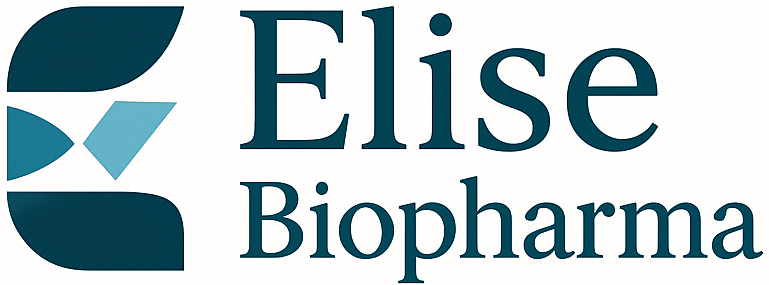Bioinformatics has emerged as a pivotal force in modern biology, bridging the gap between raw data and actionable insights. By integrating computational algorithms with vast biological datasets, this discipline is revolutionizing pathogen detection, disease surveillance, and drug development. Below, we explore several cutting-edge approaches and technical breakthroughs that illustrate how bioinformatics is decoding life at the molecular level.
Advanced Pathogen Detection Through Integrated Pipelines
The rapid identification of pathogenic microorganisms is critical in clinical diagnostics and outbreak management. Researchers have developed sophisticated bioinformatics pipelines that merge high-throughput sequencing technologies with comprehensive reference databases. For example, a novel pipeline utilizes nanopore sequencing of metagenomic samples from 40 individuals exhibiting lower respiratory tract infection symptoms. This approach leverages real-time sequencing to capture nucleic acid profiles of pathogens.
The pipeline integrates three key metrics:
- Sequence Similarity: Determines how closely a sample’s sequence aligns with known pathogen genomes.
- Abundance: Quantifies the number of reads corresponding to each microorganism, providing a measure of infection load.
- Matching Length: Assesses the length of contiguous matching sequences, contributing to the confidence in pathogen identification.
By consolidating these metrics into a composite parameter known as the “all ratio,” scientists have significantly improved the sensitivity and specificity of pathogen detection. This integrated measure offers a robust, quantitative assessment, enabling clinicians to pinpoint pathogens even in complex, mixed microbial communities.
Bioinformatics in Tuberculosis (TB) Surveillance

Tuberculosis remains a global health challenge, with the dynamics of Mycobacterium tuberculosis (Mtb) infection posing complex diagnostic and epidemiological questions. In a typical scenario, 90% of individuals exposed to Mtb successfully clear the bacteria, while the remaining 10% develop either active TB (approximately 5%) or latent tuberculosis infection (LTBI, approximately 5%). Understanding the molecular signatures that differentiate these outcomes is crucial for effective disease management.
Recent bioinformatics approaches focus on:
- Granuloma Characterization: Advanced algorithms analyze genomic and transcriptomic data from immune cells within granulomas, revealing the molecular interplay between host defenses and Mtb persistence.
- Predictive Modeling: Machine learning models, trained on datasets from patients with active TB versus LTBI, are used to predict disease progression. These models incorporate variables such as host genetic factors, cytokine profiles, and bacterial load.
- Longitudinal Surveillance: Integrative bioinformatics frameworks track changes in patient samples over time, allowing for dynamic monitoring of infection status and treatment efficacy.
Such technical advances not only enhance our understanding of TB pathogenesis but also improve public health strategies by identifying individuals at risk for reactivation or transmission.
AI-Driven Drug Discovery: Mining Big Data for Molecular Insights
Artificial intelligence (AI) is reshaping drug discovery by streamlining the process of mining clinical relationships from vast bodies of scientific literature and clinical databases. Bioinformatics tools are at the forefront of this transformation by constructing knowledge graphs that capture the intricate relationships between drugs, diseases, and genes.
Key technical elements include:
- Natural Language Processing (NLP): Cutting-edge NLP algorithms extract structured data from unstructured text across thousands of research articles. These tools identify mentions of molecular interactions, signaling pathways, and clinical outcomes.
- Knowledge Graph Construction: Relationships uncovered through NLP are mapped onto knowledge graphs, which visually and computationally represent the connectivity between biological entities. This method enables the identification of previously unrecognized drug targets and repurposing opportunities.
- Scalable Data Integration: The integration of heterogeneous datasets—including genomic, proteomic, and clinical trial data—facilitates the construction of robust predictive models that can simulate drug behavior and efficacy in silico.
These technical innovations not only accelerate the identification of promising therapeutic compounds but also reduce the reliance on traditional, time-intensive trial-and-error approaches in the laboratory.
Cultivating Expertise Through Specialized Education
The growing demand for expertise in bioinformatics has catalyzed the development of comprehensive educational programs and workshops. Institutions worldwide now offer master’s programs and certificate courses that equip students with skills in:
- Computational Biology and Data Analysis: Training in Python, R, and other programming languages essential for handling large biological datasets.
- High-Throughput Sequencing Technologies: Courses cover the technical aspects of platforms like Illumina and Oxford Nanopore, including data preprocessing and quality control.
- Algorithm Development and Machine Learning: Students learn to design, implement, and validate predictive models that can be applied to everything from pathogen detection to drug discovery.
These initiatives are supported by national workshops and interdisciplinary research centers, which create environments where academic research and industrial innovation converge. This strategic educational focus ensures that the next generation of bioinformaticians is well-prepared to tackle future challenges.
Economic and Clinical Impact: A Glimpse into the Future
The economic implications of bioinformatics are vast, with the bioinformatics services market predicted to reach new heights in the coming years. As clinical and computational data continue to grow exponentially, the application of bioinformatics is set to revolutionize personalized medicine. Innovations in computational biology are not only enhancing our capacity to diagnose and treat diseases more accurately but are also opening avenues for precision medicine that can tailor treatments to individual genetic profiles.
Moreover, emerging studies in the field, such as bioinformatics predictions of HIV coreceptor usage, underscore the potential of these technologies to inform treatment protocols and improve patient outcomes in real time.
Bioinformatics is no longer a niche field confined to academic research—it is a cornerstone of modern healthcare and drug development. From detecting pathogens with unparalleled accuracy to unraveling the molecular underpinnings of complex diseases, the integration of computational approaches is transforming every facet of biomedical science. As we continue to decode the complexities of life, these innovations not only promise enhanced public health outcomes but also pave the way for a future where precision medicine is the norm.
